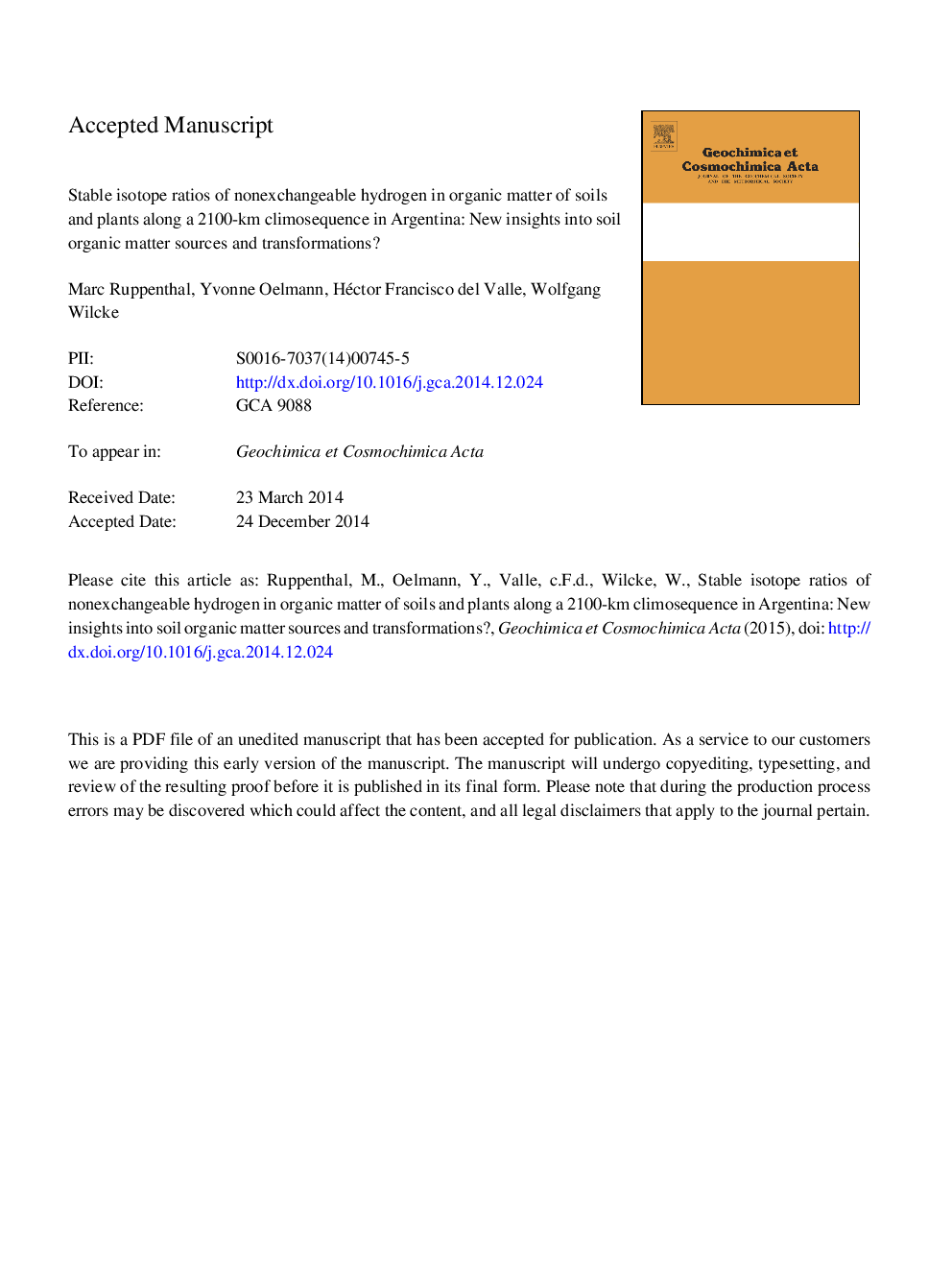| Article ID | Journal | Published Year | Pages | File Type |
|---|---|---|---|---|
| 6438043 | Geochimica et Cosmochimica Acta | 2015 | 50 Pages |
Abstract
The quantitative contribution of shoot and root organic matter (OM) to the soil carbon (C) stock is still unknown, mainly because of methodological restrictions. The novel measurement of the nonexchangeable hydrogen (H) stable isotope ratio (δ2Hn) in bulk OM provides new opportunities to investigate the sources of soil C and its climate-dependent transformations. Our objectives were to test whether (I) there are systematic differences between δ2Hn values of aboveground and belowground plant OM and (II) δ2Hn values of litter and soil OM relate to climate and plant OM source δ2Hn signals. We determined δ2Hn values of bulk shoot, root, litter and demineralized soil OM from 20 sampling sites along a 2100-km climosequence from the Argentinean Pampas to the Patagonian steppe. The δ2Hn values of shoot and litter OM correlated closely with the aridity index (r = â0.83, p < 0.001 and r = â0.78, p < 0.001, respectively) because of H isotope fractionation during aridity-controlled transpiration in shoots. In contrast, δ2Hn values of root and soil OM showed a close correlation with modeled mean annual δ2H values of local precipitation (r = 0.91, p < 0.001 and r = 0.97, p < 0.001, respectively, root mean square error of 8.2â° and 7.2â°, respectively) and thus mean annual temperature (r = 0.80, p < 0.001 and r = 0.88, p < 0.001, respectively). δ2Hn values of shoot and root OM differed markedly (no linear correlation) most likely because of biosynthetic exchange of C-bound H with ambient water in the roots. δ2Hn values of root and demineralized soil OM, however, were closely correlated (r = 0.91, p < 0.001) with a constant offset irrespective of climatic conditions, suggesting that root OM was a more important source of soil OM than shoot OM. A possible contribution of shoot OM to soil OM could only be explained if shoot OM underwent biosynthetic exchange of C-bound H with ambient water in soil during microbial and fungal decomposition. This mechanism is known for substrates processed through the microbial and fungal glycolysis-gluconeogenesis metabolic pathways. Our modeling suggested that the δ2Hn signature of soil OM is best explained under the assumption that root OM is the predominant source of soil OM, rather than shoot and litter OM.
Related Topics
Physical Sciences and Engineering
Earth and Planetary Sciences
Geochemistry and Petrology
Authors
Marc Ruppenthal, Yvonne Oelmann, Héctor Francisco del Valle, Wolfgang Wilcke,
